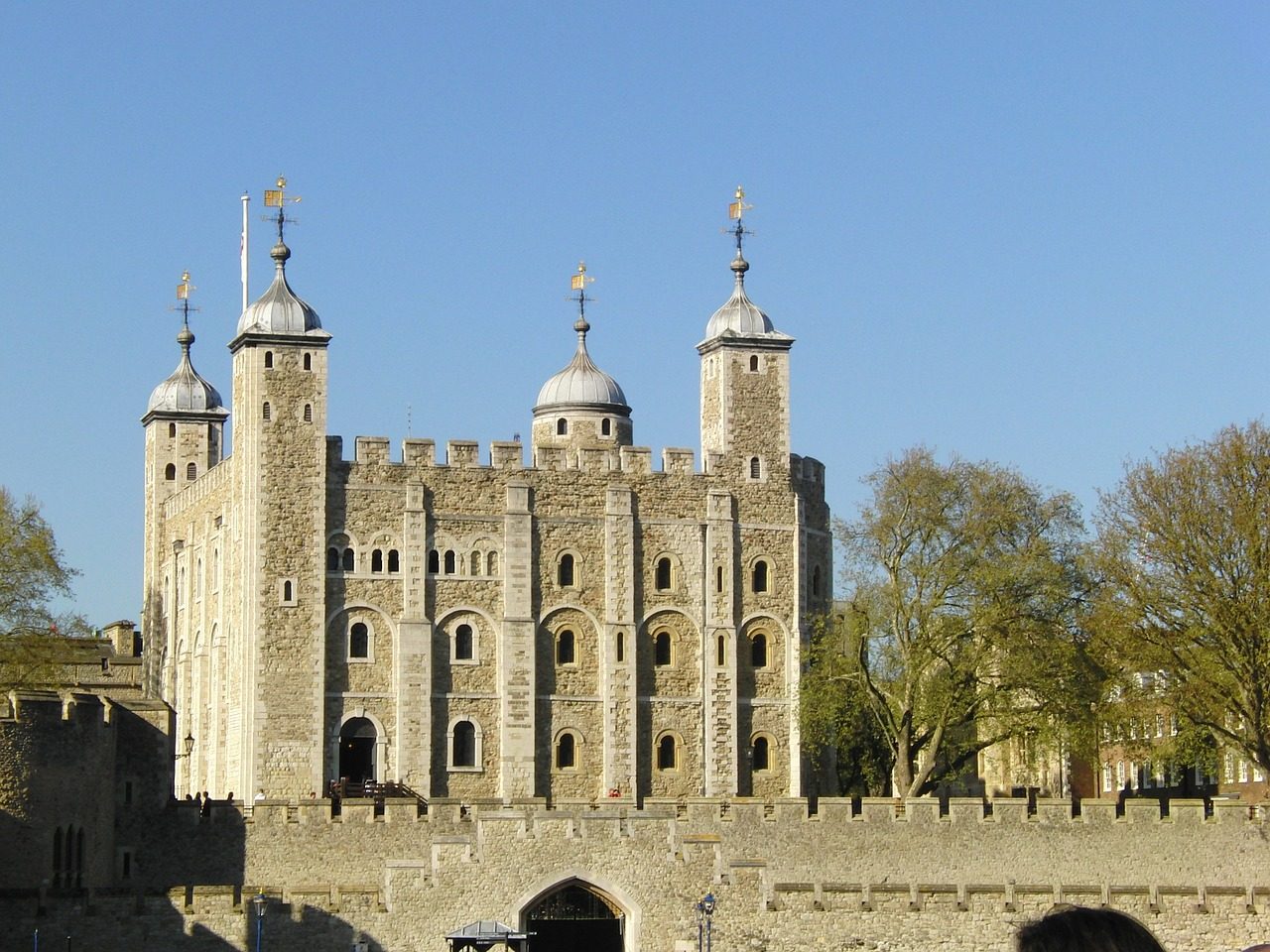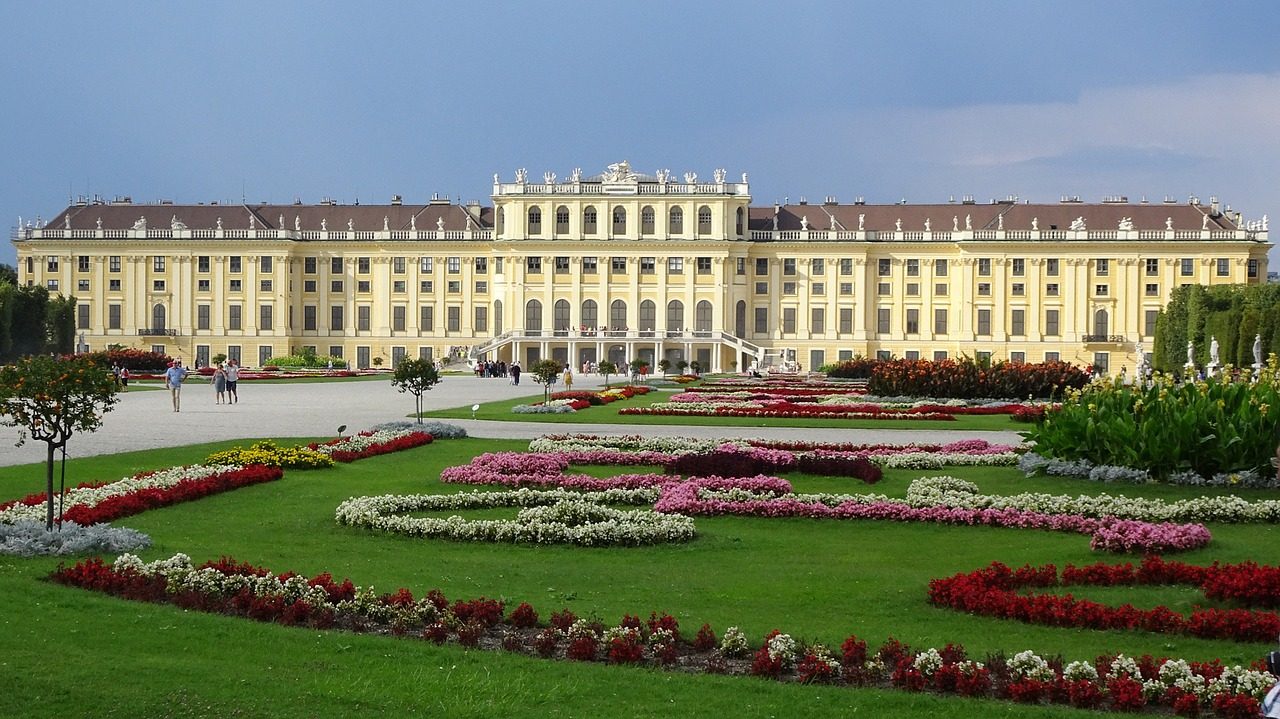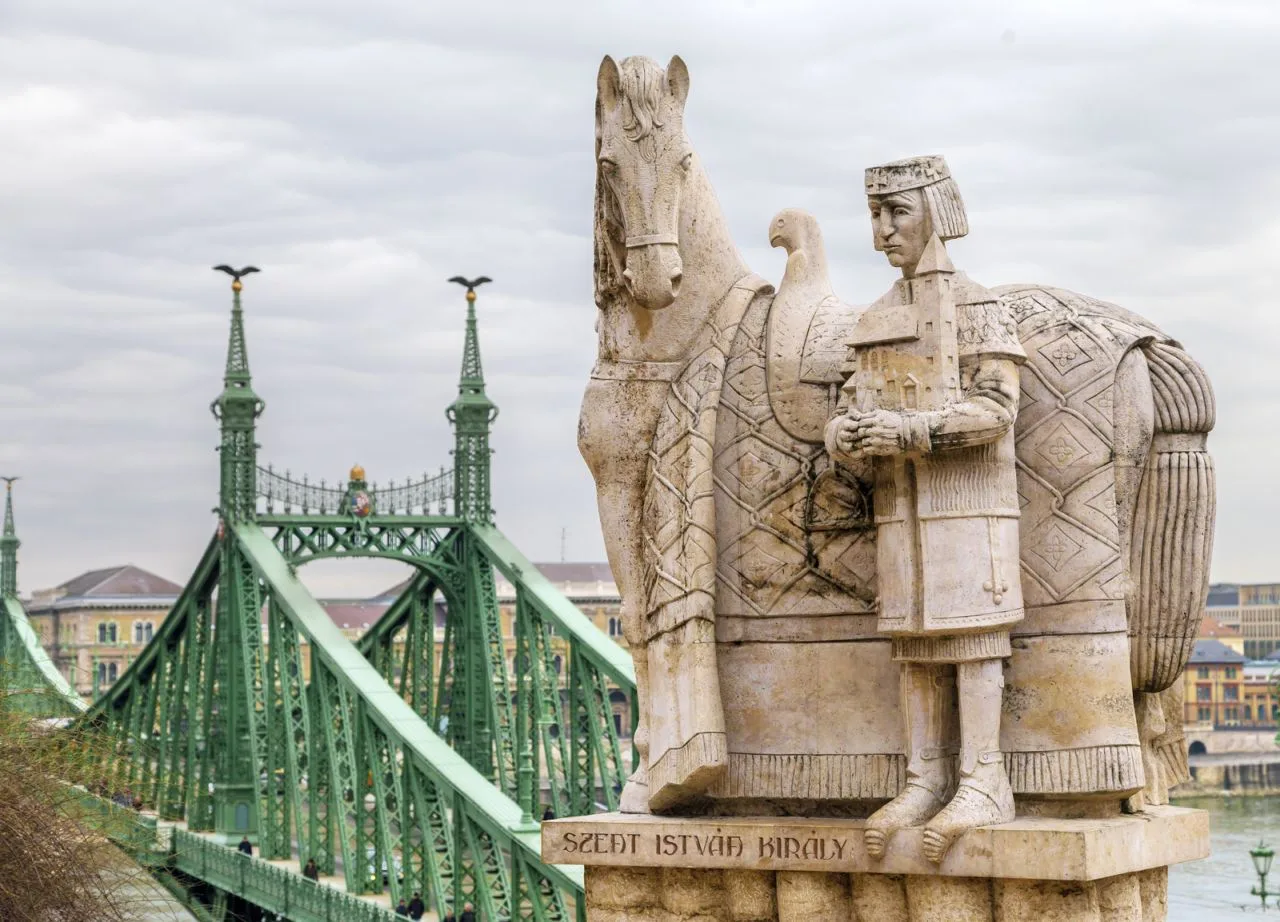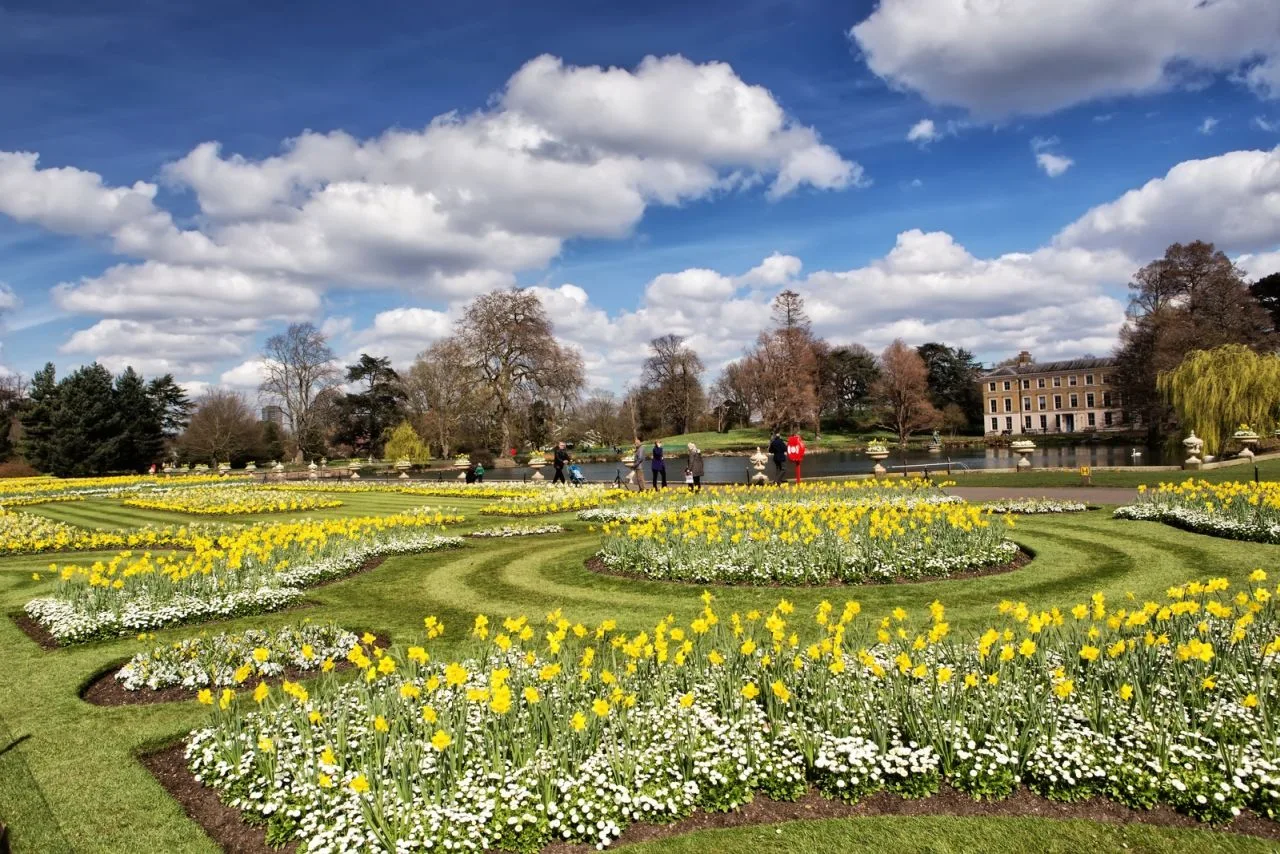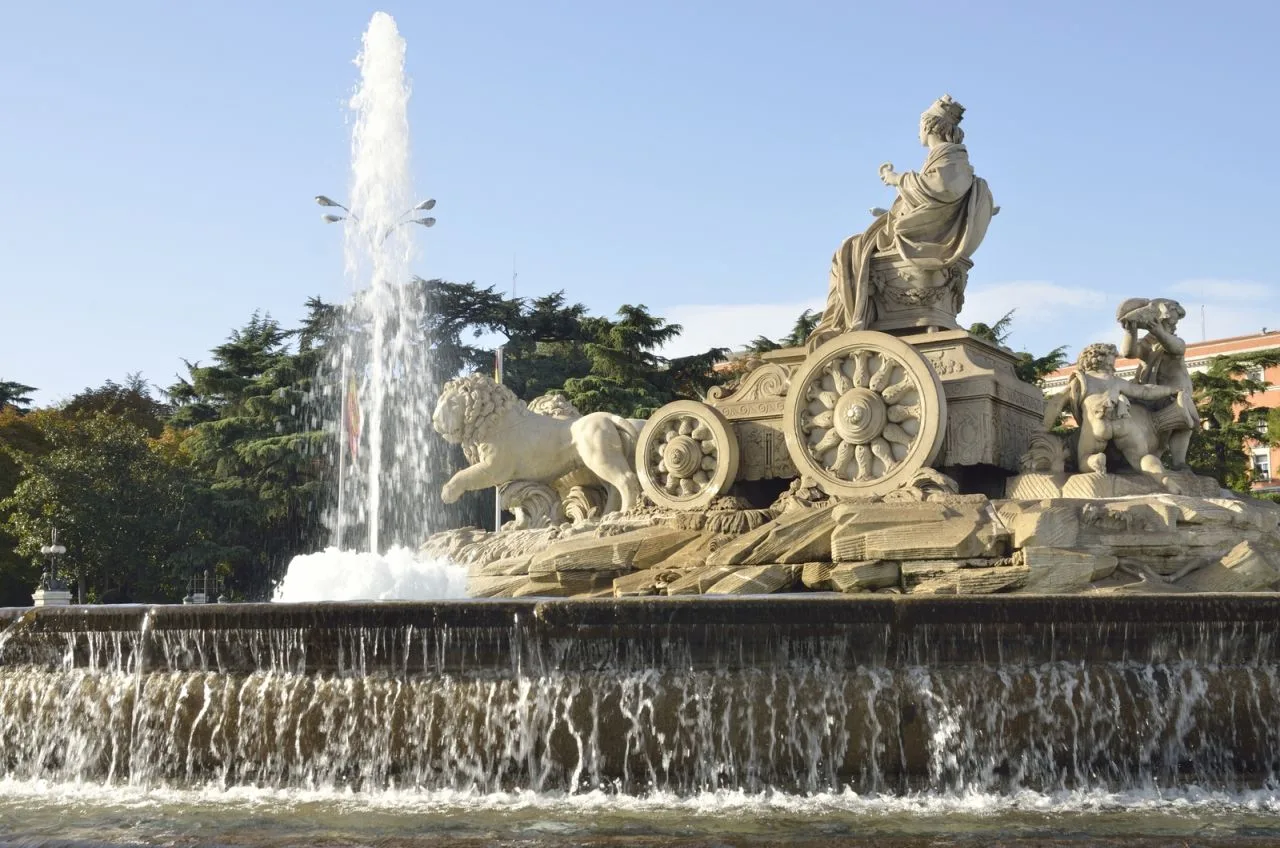Tower of London, visitor’s guide and tips
Address
London EC3N 4AB
GPS
51.5074456, -0.1277653
The Tower of London, officially known with full name as Her Majesty’s Royal Palace and Fortress of the Tower of London, is a historic castle located on the north bank of the River Thames in the center of London.
Quick facts
- Name: Tower of London
- Location: London, UK
- Built from 1087
- Type of attraction: Architectural/Fortress
- Ticket price: From $24
Are you ready to immerse yourself in centuries of history, intrigue, and royal grandeur? Look no further than the iconic Tower of London – a captivating fortress that has stood witness to countless tales of power, betrayal, and bravery.
Whether you’re a history enthusiast or simply seeking an unforgettable adventure, this blog post is your ultimate guide to planning a visit to one of the world’s most renowned landmarks. From must-see attractions to insider tips that will enhance your experience, prepare for an extraordinary journey through time as we unlock the secrets within the walls of the Tower.
Introduction to the Tower of London
The Tower of London is one of the most iconic and historic landmarks in London. Located on the north bank of the River Thames, this imposing fortress has stood for over nine centuries and has played a significant role in shaping English history. Originally built as a royal palace by William the Conqueror in 1066, it has since been used as a prison, treasury, mint, and jewel house. Today, it is one of London’s top tourist attractions, offering visitors a glimpse into its rich and sometimes gruesome past.
History
Before diving into what to see at the Tower of London, it’s essential to understand its fascinating history. As mentioned earlier, it was built by William the Conqueror following his victory at the Battle of Hastings in 1066. The main purpose was to defend and control access to the city from invaders through its strategic location on a high ground overlooking the river.
Over time, additional structures were added to fortify and expand the tower. It became home to many kings and queens throughout history who made various modifications according to their needs or preferences. However, it wasn’t just a royal residence; it also served as a prison for notable figures such as Anne Boleyn (second wife of Henry VIII), Sir Walter Raleigh (explorer), and Guy Fawkes (infamous for attempting to blow up Parliament).
Must-See Attractions
Now that you have an idea about its background let’s explore some must-see attractions at the Tower of London:
 1. The White Tower: This is the oldest and most iconic building within the complex. It stands at 27 meters high and was originally built as a royal residence. Today, it houses a museum with displays of armor, weapons, and other artifacts.
1. The White Tower: This is the oldest and most iconic building within the complex. It stands at 27 meters high and was originally built as a royal residence. Today, it houses a museum with displays of armor, weapons, and other artifacts.
2. Crown Jewels: The Tower of London is also home to the Crown Jewels, which are on display for visitors to see. These include crowns, scepters, orbs, and other precious items used in coronations and other royal ceremonies.
3. Tower Green: Located within the tower’s walls is a small green space where executions took place. Among those executed here were Anne Boleyn and Lady Jane Grey.
4. Ravens: Legend has it that if the ravens ever leave the tower, it will crumble and fall, so these birds are considered guardians of the tower. Visitors can see them roaming freely around the grounds.
5. Medieval Palace: This part of the tower complex was built by King Edward I in the 13th century as his private residence within the fortress.
Visiting Information
The Tower of London is open daily from 9 am to 6 pm (last admission at 5 pm). The nearest tube station is Tower Hill, and entrance tickets can be purchased online or at the tower itself. It is recommended to give yourself at least two hours for a visit, but you could easily spend half a day exploring all the different areas and attractions.
In conclusion, the Tower of London is a must-visit for anyone interested in English history and architecture. With its fascinating past and stunning views of the city, it’s no wonder it remains one of London’s top attractions.
History of the Tower and its significance
The Tower of London has a rich history dating back nearly 1,000 years. It was originally built by William the Conqueror in 1078 as a fortress to protect London from invaders. Over the centuries, it has served as a royal palace, treasury, prison, and execution site.
 One of the most significant events in the Tower’s history is its role as a prison for high-profile political prisoners. From the late 12th century to the mid-20th century, many notable figures were held captive within its walls, including Queen Anne Boleyn and Sir Walter Raleigh. The infamous “Bloody Tower” was where two young princes, Edward V and Richard of Shrewsbury, were imprisoned and later disappeared under suspicious circumstances.
One of the most significant events in the Tower’s history is its role as a prison for high-profile political prisoners. From the late 12th century to the mid-20th century, many notable figures were held captive within its walls, including Queen Anne Boleyn and Sir Walter Raleigh. The infamous “Bloody Tower” was where two young princes, Edward V and Richard of Shrewsbury, were imprisoned and later disappeared under suspicious circumstances.
The Tower also played a crucial role in England’s wars and conflicts. In the 16th century, King Henry VIII used it as an armory and storehouse for weapons during his reign. During World War II, it served as an air raid shelter for civilians and housed valuable treasures from the British Museum for safekeeping.
Aside from its military significance, the Tower of London is also known for its iconic Crown Jewels. These jewels are still on display today and include some of the most valuable diamonds in the world, such as the Imperial State Crown worn by Queen Elizabeth II at her coronation.
Throughout history, countless tales of intrigue and betrayal have been associated with this historic landmark. Its dark reputation as a place of imprisonment and torture only adds to its mystique and allure. Today, the Tower of London remains one of the most visited tourist attractions in England, attracting millions of visitors each year who come to explore its rich history and marvel at its iconic architecture.
Planning your visit: Tips for purchasing tickets, hours of operation, and getting there
Planning your visit to the Tower of London can be a daunting task, but with these helpful tips on purchasing tickets, understanding hours of operation, and getting there, you’ll be able to make the most out of your experience.
Purchasing Tickets
The Tower of London is a popular tourist destination and it’s recommended to purchase tickets in advance. This will not only save you time waiting in line, but it also guarantees entry on your desired date and time. Tickets can be purchased online through the official website or through third-party vendors. It’s important to note that tickets may sell out quickly during peak seasons such as summer or holidays, so it’s best to plan ahead.
Hours of Operation
The Tower of London is open daily from 9:00 am to 5:30 pm (March-October) and 9:00 am to 4:30 pm (November-February). During peak season (July-August), the last admission is at 6:00 pm. The attraction is closed on December 24-26 and January 1. It’s recommended to arrive early in the morning or later in the afternoon to avoid crowds.
Getting There
The Tower of London is located near several major transportation hubs including underground stations and bus stops. The closest underground station is Tower Hill which can be accessed via District and Circle lines. Additionally, there are several bus routes that stop near the tower including numbers RV1, 15, 42,78,and100.
For those who prefer to drive, there is limited parking available near the tower. However, due to traffic and congestion in central London, it’s recommended to use public transportation instead.
Other Tips
- Wear comfortable shoes as there is a lot of walking involved.
- Download a map or get one at the entrance to help navigate your way around the complex.
- Consider purchasing an audio guide for a more informative experience.
- Check the weather forecast and dress accordingly as some parts of the attraction are outdoors.
- Bring cash with you as some areas within the tower do not accept credit cards.
- Be respectful of the historical significance of the site and follow all rules and regulations.
Must-See Attractions at the Tower: Crown Jewels, White Tower, and more
The Tower of London is a historic fortress that has stood for over 900 years, making it one of the most iconic landmarks in London. Within its walls, there are many must-see attractions that are sure to fascinate visitors of all ages. In this section, we will explore some of the top highlights at the Tower: the Crown Jewels and the White Tower.
1. The Crown Jewels
The Crown Jewels are arguably the most famous and valuable collection at the Tower of London. These dazzling pieces include crowns, scepters, orbs, swords, and other regalia used during royal coronations and ceremonies. The current collection dates back to 1661 when they were remade for Charles II after being destroyed during Oliver Cromwell’s rule.
Visitors can view these stunning jewels in person as they are on display in a special exhibition within the Jewel House. Be prepared to be amazed by their sheer beauty and grandeur as you walk through rooms filled with sparkling diamonds, rubies, emeralds, and more.
2. The White Tower
The imposing White Tower is one of the oldest buildings at the Tower of London and has played a significant role throughout history as both a palace and a prison. Today, it houses an impressive armory collection spanning centuries of warfare in England.
Inside this formidable building, visitors can explore interactive displays showcasing weapons such as swords, shields, armor worn by kings like Henry VIII and Charles I during battles.
One highlight not to be missed is the Line of Kings exhibition, where you can see a collection of life-size wooden horses dressed in armor used by kings and knights in battle.
3. Tower Green
Tower Green is a peaceful garden area within the Tower walls that holds a dark history. It is where many notable executions took place, including those of Anne Boleyn, Lady Jane Grey, and Sir Thomas More. Today, visitors can pay their respects at the memorial markers placed on the site.
The famous scaffold where these executions were carried out is no longer standing, but a replica has been erected for visitors to see and imagine what it would have been like during those tumultuous times.
4. The Yeoman Warders
Another must-see attraction at the Tower of London is the Yeoman Warders, commonly known as “Beefeaters.” These iconic guards are not just there for show; they are highly trained members of the armed forces who also serve as tour guides.
Visitors can join one of their entertaining guided tours around the Tower grounds while learning about its rich history and legends. The Yeoman Warders’ presence adds to the unique atmosphere and experience of visiting this ancient fortress.
5. The Ravens
The ravens are an important part of Tower lore and tradition. According to legend, if the ravens ever leave the Tower, the kingdom and the Tower itself will fall. To prevent this from happening, there are always at least six ravens living in the Tower, cared for by a designated Ravenmaster.
Visitors can see these majestic birds up close and learn more about their role in protecting the Tower.
6. The Chapel of St Peter ad Vincula
The Chapel of St Peter ad Vincula is a small but significant chapel within the Tower grounds where many famous prisoners were buried after their executions. These include Anne Boleyn, Catherine Howard, Thomas Cromwell, and more.
Visitors can enter the chapel for free and pay their respects to these historical figures by viewing their graves.
The Beefeaters: Who are they and what role do they play at the Tower?
The Beefeaters, also known as the Yeomen Warders, are perhaps one of the most iconic symbols of the Tower of London. Dressed in their distinctive red and gold uniforms, these yeomen have been a part of the Tower’s history for over 500 years.
 Originally formed by King Henry VII in 1485, the Beefeaters were tasked with guarding and protecting the Tower and its prisoners. Their name is believed to have originated from their rich diet which included beef as well as other meats. It is also said that they were given this name due to their role in overseeing royal banquets at the Tower.
Originally formed by King Henry VII in 1485, the Beefeaters were tasked with guarding and protecting the Tower and its prisoners. Their name is believed to have originated from their rich diet which included beef as well as other meats. It is also said that they were given this name due to their role in overseeing royal banquets at the Tower.
Today, there are 37 Yeoman Warders who live within the walls of the Tower with their families. Each one has served at least 22 years in either the British Army or Royal Marines and holds an impressive military record.
Apart from being responsible for safeguarding the Tower, these yeomen also serve as tour guides for visitors. They are experts on all things related to the history of this famous landmark and offer fascinating insights into its past.
 One of their most notable duties is conducting a daily ceremony known as “The Ceremony of The Keys”. This has been carried out every night without fail for over 700 years! At exactly 9:53 pm, visitors can witness this traditional locking up ritual where keys are handed over by a military escort to a Yeoman Warder who then locks each gate while saying “God Preserve Queen Elizabeth”.
One of their most notable duties is conducting a daily ceremony known as “The Ceremony of The Keys”. This has been carried out every night without fail for over 700 years! At exactly 9:53 pm, visitors can witness this traditional locking up ritual where keys are handed over by a military escort to a Yeoman Warder who then locks each gate while saying “God Preserve Queen Elizabeth”.
Another important role played by the Beefeaters is guarding the Crown Jewels. They are responsible for protecting these precious treasures and ensuring their security at all times.
In addition to their ceremonial duties, the Yeoman Warders also participate in various events at the Tower, such as the annual ceremony of “The Constable’s Dues” where a duck is presented to the Constable of the Tower as rent for his land.
Overall, the Beefeaters play a significant role in preserving and showcasing the history of the Tower of London. Their dedication and commitment to their duties make them an important part of this iconic landmark.
Recommended nearby attractions and restaurants
When planning a visit to the Tower of London, it is important to also consider nearby attractions and restaurants. The area surrounding the Tower is home to many historical sites, as well as some fantastic dining options. To make the most out of your trip, here are some recommended nearby attractions and restaurants that you should add to your itinerary.
1. Tower Bridge
Located just a short walk from the Tower of London, Tower Bridge is one of the most iconic landmarks in London. This impressive bridge has become synonymous with the city and offers stunning views of the River Thames and its surrounding areas. Visitors can take a tour inside the bridge’s towers or even experience walking over its glass floor high above the river.
2. St Katharine Docks
For a peaceful escape from the hustle and bustle of central London, head over to St Katharine Docks located just next to Tower Bridge. This marina is lined with charming cafes, bars, and restaurants where you can enjoy a relaxing meal or drink while watching boats come in and out of the docks.
3. Monument to the Great Fire of London
The Monument to the Great Fire of London is another popular attraction within close proximity to the Tower of London. Built-in memory of the Great Fire of London in 1666, this 202-foot-tall column offers panoramic views over central London from its observation deck at the top.
4. Sky Garden
If you’re looking for breathtaking views without having to leave ground level, then head over to Sky Garden located just across from The Monument. This unique public space spans three levels and offers 360-degree views of the city, along with beautiful gardens and several dining options.
5. Borough Market
For food lovers, a visit to Borough Market is a must. This bustling food market is located just a short tube ride from the Tower of London and offers an incredible selection of fresh produce, street food, and artisanal products. It’s a great place to grab a quick bite or pick up some souvenirs to take home.
6. The Clink Prison Museum
For those interested in the darker side of history, The Clink Prison Museum is worth a visit. Located near London Bridge, this museum offers an immersive experience into the notorious prison that operated from the 12th century until the late 18th century.
7. The Ivy Tower Bridge
After a day of exploring nearby attractions, you’ll surely have worked up an appetite. For a special dining experience, head over to The Ivy Tower Bridge for classic British cuisine in an elegant setting with stunning views of Tower Bridge.
8. Le Pont de la Tour
Another fantastic dining option with views of Tower Bridge is Le Pont de la Tour. This upscale French restaurant serves delicious dishes using locally sourced ingredients and has an extensive wine list to pair with your meal.
9. The Coal Shed
Located in the heart of London’s foodie district, The Coal Shed serves up mouth-watering steaks and seafood dishes in a stylish, industrial-style setting. It’s the perfect spot for a hearty meal after a day of sightseeing.
Insider tips for a successful visit
When visiting the Tower of London, there are a few insider tips that can help make your experience more enjoyable and successful. Here are some key tips to keep in mind:
1. Purchase tickets online beforehand: The Tower of London is a popular tourist attraction and it can get quite busy, especially during peak season. To avoid long lines and potential disappointment if tickets sell out, it is recommended to purchase your tickets online ahead of time. This will also save you money as online tickets are often cheaper than purchasing at the gate.
 2. Plan for a full day visit: The Tower of London is not just one building, but rather a large complex with multiple buildings and attractions within it. To fully experience everything the tower has to offer, plan for a full day visit. This will allow you enough time to explore all the exhibits, attend tours and activities, and even have some breaks for lunch or snacks.
2. Plan for a full day visit: The Tower of London is not just one building, but rather a large complex with multiple buildings and attractions within it. To fully experience everything the tower has to offer, plan for a full day visit. This will allow you enough time to explore all the exhibits, attend tours and activities, and even have some breaks for lunch or snacks.
3. Arrive early or late in the day: As mentioned before, the Tower of London can get quite crowded during peak season. If possible, try to arrive early in the morning or later in the afternoon to avoid large crowds. This will also give you more time to take photos without people in them.
4. Take advantage of free tours: The admission ticket includes free guided tours by Beefeaters (Yeoman Warders). These knowledgeable guides will provide interesting insights into the history and stories behind each part of the tower. Make sure to check their schedules upon arrival so you don’t miss
Conclusion
In conclusion, a visit to the Tower of London is an experience not to be missed. With its rich history and stunning architecture, it offers something for everyone. By following our tips and making sure to see the must-see attractions, you are sure to have an unforgettable time at this iconic landmark. Whether you are a history buff or simply looking for a unique adventure, the Tower of London is a must-visit destination that will leave you in awe. So start planning your trip now and get ready to explore one of London’s most famous landmarks!
The Tower of London has played an important role in the UK history. It was a strategic place, and whoever was controlling it was able to control the city and entire country. It has served various purposes through history: an armoury, a treasury, a menagerie, the home of the Royal Mint, a public record office, and the home of the Crown Jewels of England.
Throughout its history, the tower has housed a diverse group of inmates, ranging from deposed monarchs to simple criminals. Lady Jane Grey, who was queen for approximately a week in the 16th century until being ousted by Mary I, was among those imprisoned.
Two princes, Edward and Richard, ages 12 and 9, who were the sons of Edward IV, were also imprisoned (died 1483). They don’t appear to have ever left the tower alive, and some speculate that they were murdered by Richard III, their uncle who usurped the crown.
Anne Boleyn and Katherine Howard, two of Henry VIII’s wives, were imprisoned and later executed. Henry VIII, who converted England to Protestantism, imprisoned and later executed a number of dissenting clergymen, including his erstwhile counselor Thomas More.
Today, the tower is guarded by bearded Yeoman Warders, also known as “Beefeaters.”
Warders, or ‘Waiters,’ as they were sometimes called, created and acted likely a friendly society, sharing the rewards of their official and unofficial tasks through dividends,” writes Parnell. Renting out areas of the ground and taking tourists around could bring in some cash.
Interesting facts about Tower of London
Here are some interesting facts about this impressive historic landmark:
- Due to some old legend, at least 6 ravens are kept at the Tower of London at all time, for superstitious reasons.
- There are over 23,500 jewels kept in Marin Tower (part of the Tower of London) today.
- The Royal Zoo was hosted in Tower of London from 13th until 19th century.

